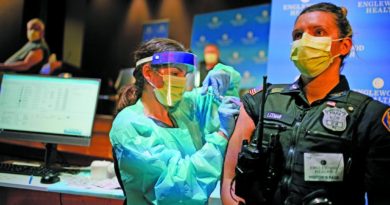Researchers characterize ECMO use, patient outcomes during COVID-19 pandemic
October 13, 2023
3 min read
Key takeaways:
- U.S. hospitalizations requiring ECMO totaled $908 million in 2020.
- ECMO use was more common in the first pandemic wave and in the Midwest.
- Risk stratification is necessary prior to ECMO cannulation.
HONOLULU — 2020 COVID-19 hospitalizations requiring extracorporeal membrane oxygenation cost significantly more and had lengthier stays than those that did not utilize ECMO, according to study results presented at the CHEST Annual Meeting.
Use of ECMO also varied according to U.S. region and was more common in the first wave of the pandemic, Kam Sing Ho, MD, pulmonology and critical care fellow at University of Maryland and the NIH, and colleagues found.

Researchers found that use of ECMO during the COVID-19 pandemic significantly increased hospital costs and length of stay for patients. Image: Adobe Stock

Kam Sing Ho
“ECMO is an exciting area of advanced life support, but it also comes with a high cost,” Ho told Healio. “Those who were placed on ECMO also had a high mortality (45% after age adjustment); therefore, it is important to understand who may be the appropriate candidates for ECMO cannulation. It will be exciting to see future clinical trials focus on this topic.”
Ho and colleagues used 2020 data from the Healthcare Cost and Utilization Project—Nationwide Inpatient Sample to evaluate ECMO patterns of utilization during the COVID-19 pandemic, as well as patient characteristics and outcomes.
Ho told Healio that given the resource limitations on ECMO use, he and his team wanted to understand where it was most utilized and for which patients.
“ECMO is an exciting, advanced form of life support for patients who fail conventional medical therapy for acute respiratory distress syndrome,” Ho said. “During the COVID-19 pandemic, we saw a substantially high mortality from the virus infection prior to the release of the vaccine. Some of these patients with severe COVID-19 would have been potential candidates for ECMO; however, given the health care burden and resource limitation, it would have been impossible to offer this to everyone.”
Researchers identified 1.6 million COVID-19 hospitalizations among adults aged 18 years or older in 2020. Of these, 208,595 required mechanical ventilation and 3,745 underwent ECMO.
Overall, this equated to 2.25 ECMO cases per 1,000 COVID-19 hospitalizations, and 16.1 ECMO cases per 1,000 COVID-19 hospitalizations requiring mechanical ventilation.
Thirty-seven percent of ECMO cases occurred during the first pandemic wave of April to July, compared with 14% in the second wave from November to December.
Researchers found this outcome surprising, Ho told Healio.
“This could suggest a number of things, including the emergence of novel and less virulent SARS-CoV-2 variants, the effectiveness of corticosteroids or the improvement of COVID-19 medical care through experience,” he said.
Researchers noted that most patients who received ECMO were aged 40 to 60 years (61.8%) and were men (68.6%). Also, 35.2% were white and 34.4% Hispanic, with hypertension, hyperlipidemia and diabetes observed as the most common comorbidities in this group.
A vast majority of hospitals where patients received ECMO were urban (99.6%) and teaching (94.7%) hospitals.
When analyzed by region, researchers observed significant variation (P < .001), with the greatest use of ECMO in the Midwest (2.6 cases per 1,000 COVID-19 hospitalizations; 95% CI, 2.43-2.81) followed by the Northeast (2.4 per 1,000; 95% CI, 2.24-2.64) and South (2.2 per 1,000; 95% CI, 2.1-2.34) and the lowest in the West (1.8 per 1,000; 95% CI, 1.65-1.96).
The cost of all ECMO hospitalizations totaled $908 million, with comparable mean costs among survivors ($256,018 ± $13,245) and nonsurvivors ($237,835 ± $13,084).
Researchers noted significantly lower mean hospital costs for COVID-19 hospitalizations not requiring ECMO for both survivors ($17,933 ± $178) and nonsurvivors ($41,626 ± $549; P < .001 for both).
Mean hospital length of stay also was significantly longer among those requiring vs. not requiring ECMO in both the surviving (39 ± 1.7 days vs. 7.45 ± 0.03 days) and nonsurviving (28 ± 1.5 days vs. 11.43 ± 0.08 days; P < .001 for both) groups.
“Due to our limited health care resources, including shortage of hospital beds and staff personnel, [the cost of ECMO in 2020] highlights the importance of effective risk stratification of patients being considered for ECMO to help identify the most appropriate candidates for ECMO cannulation,” Ho said.





